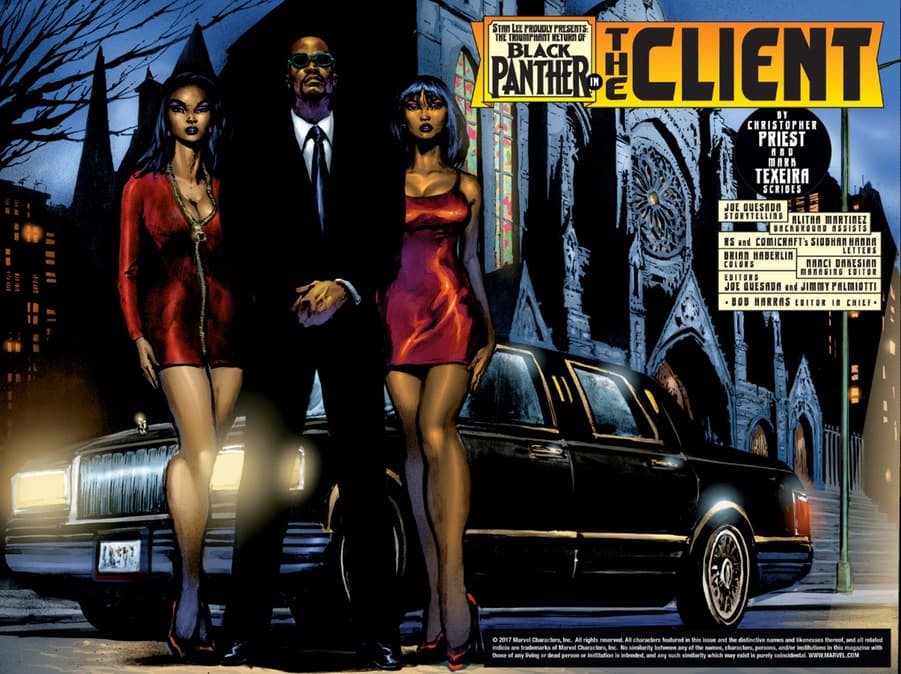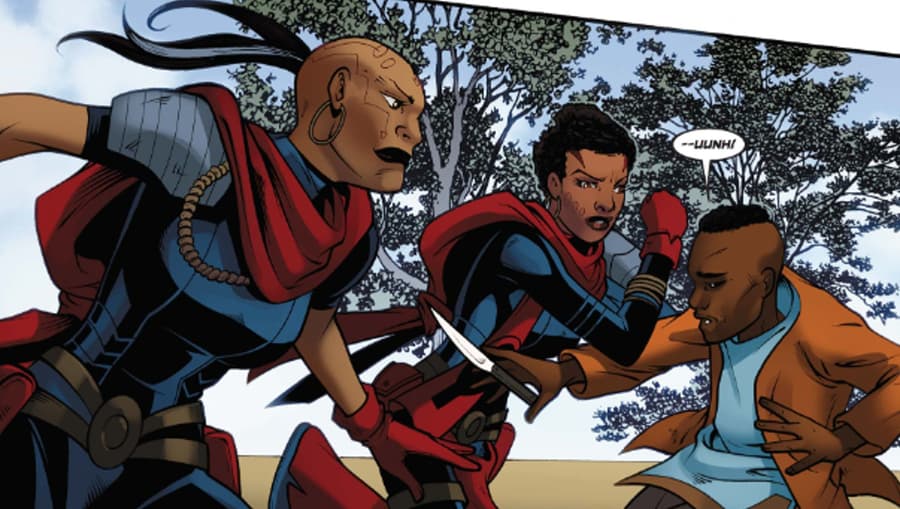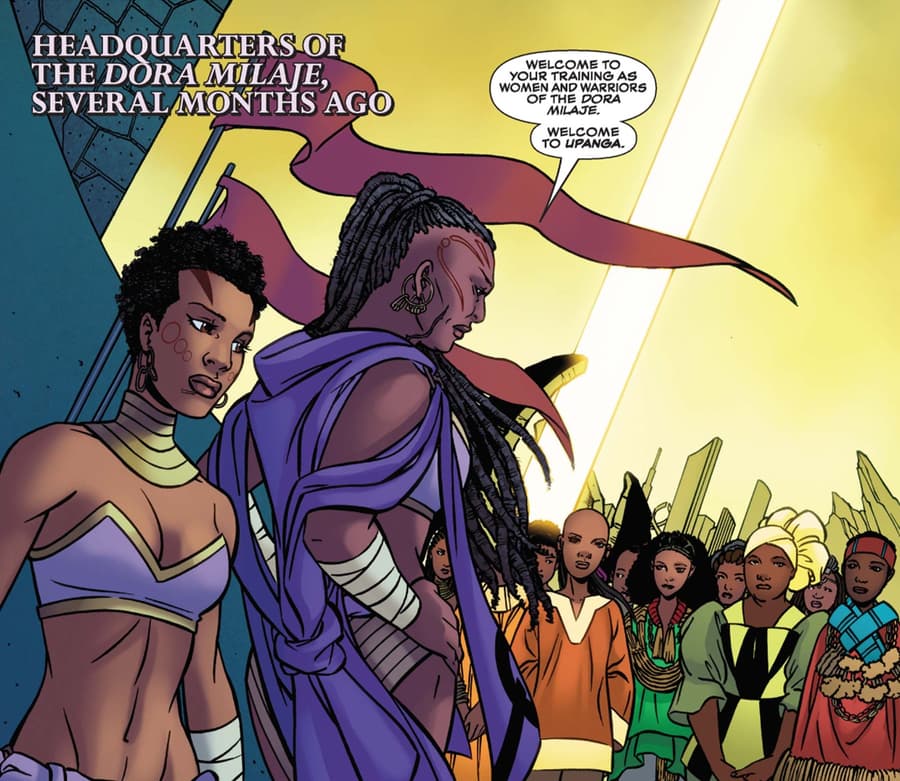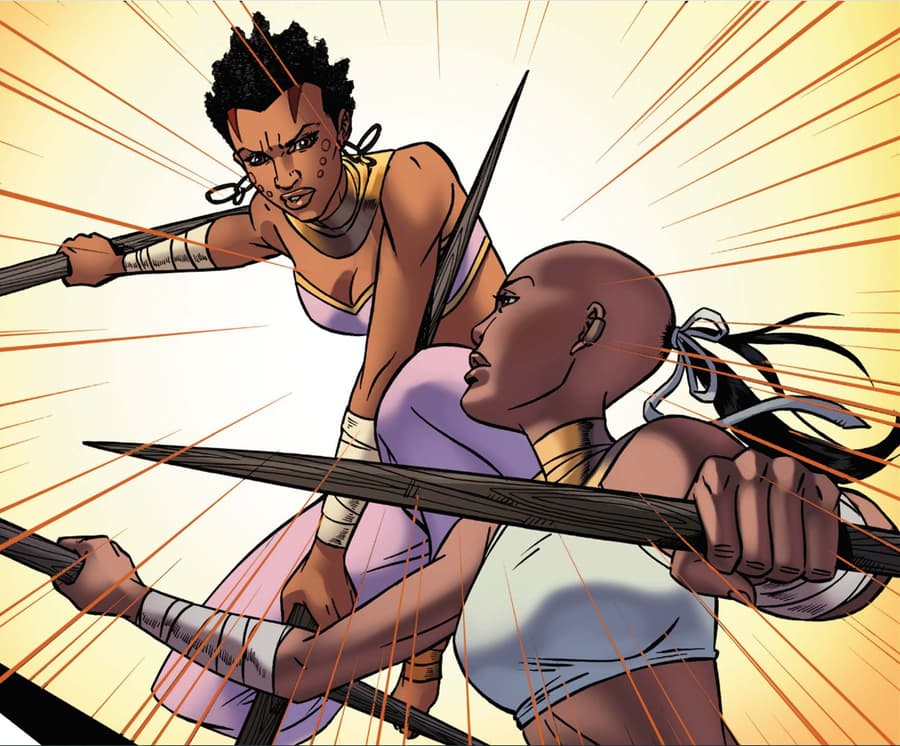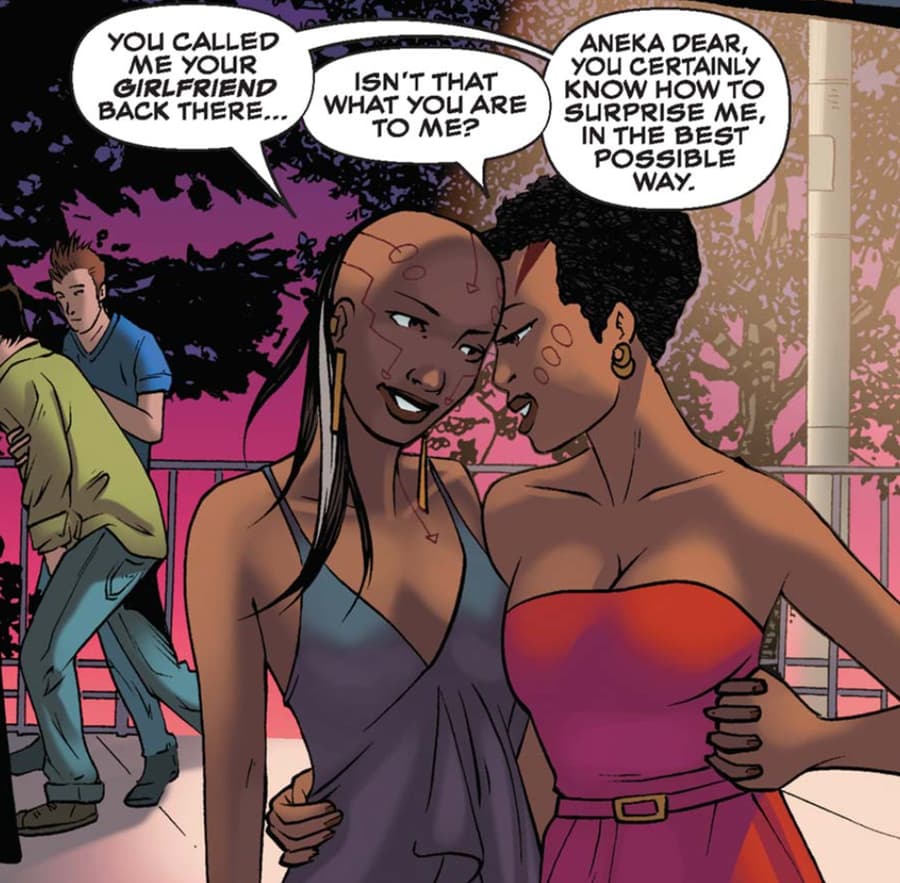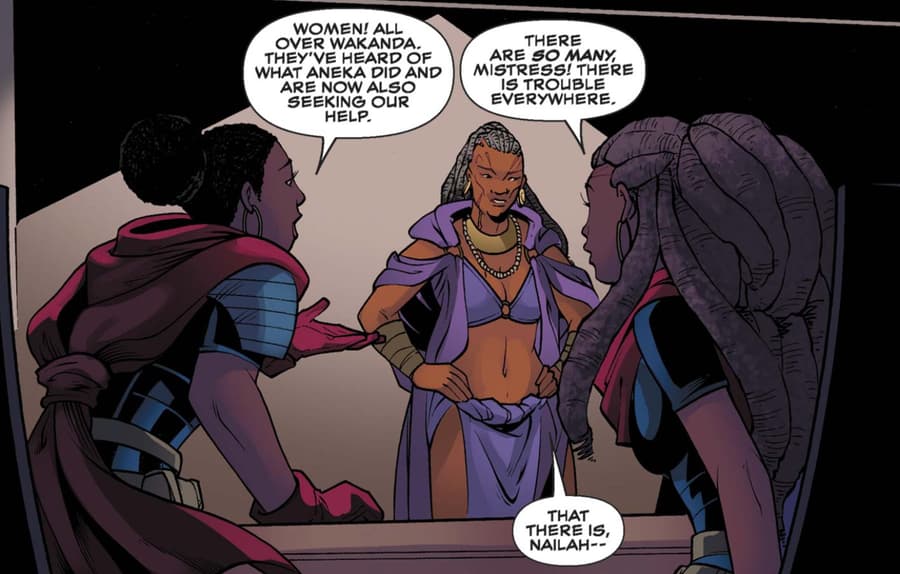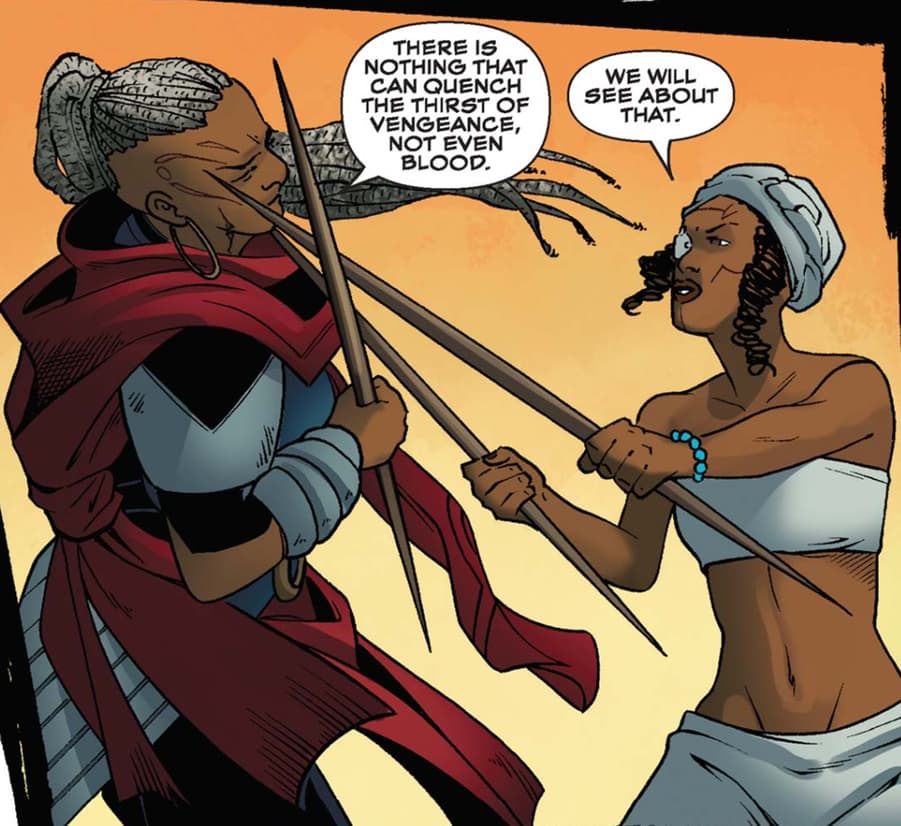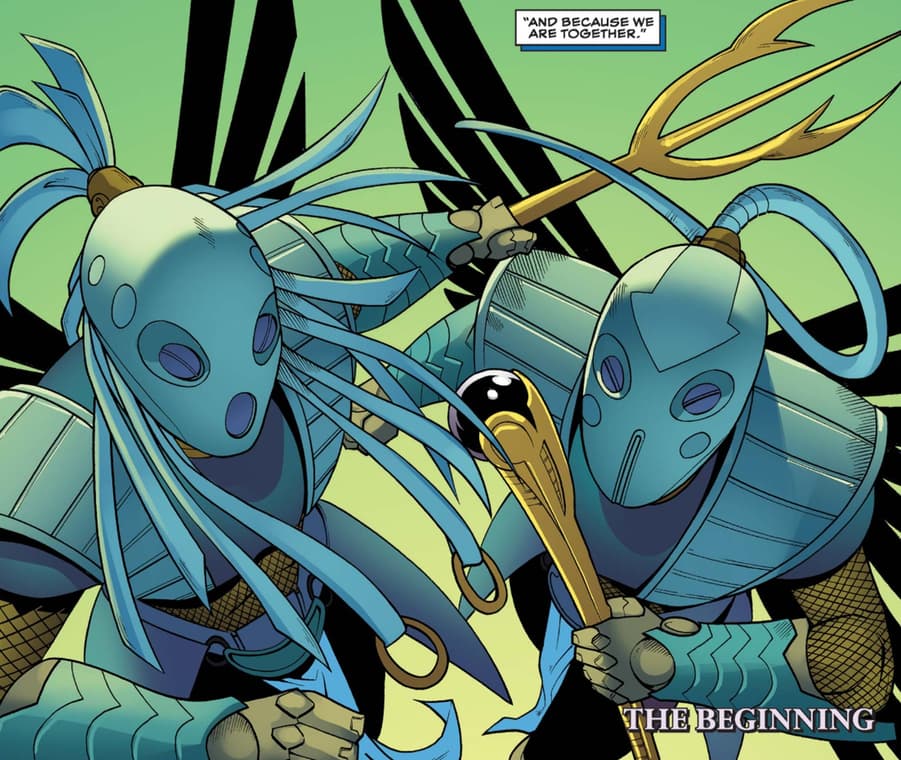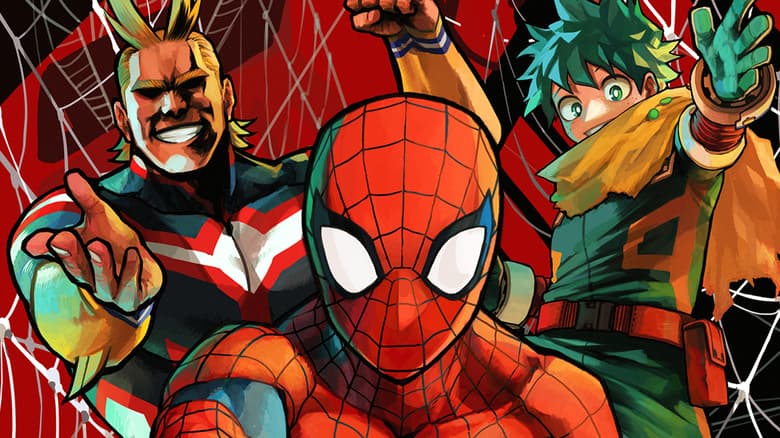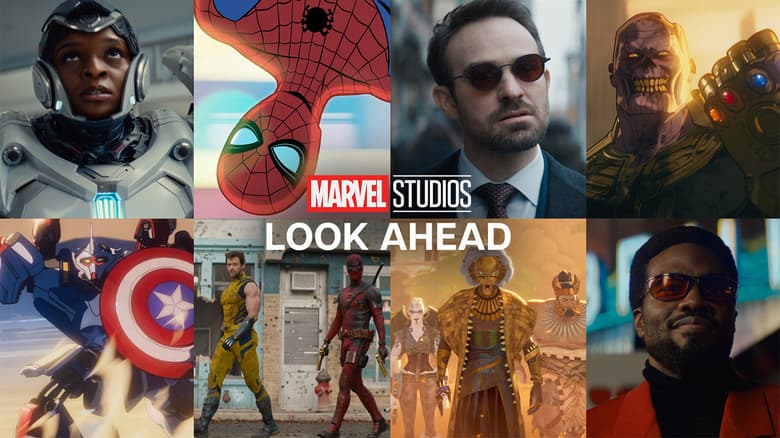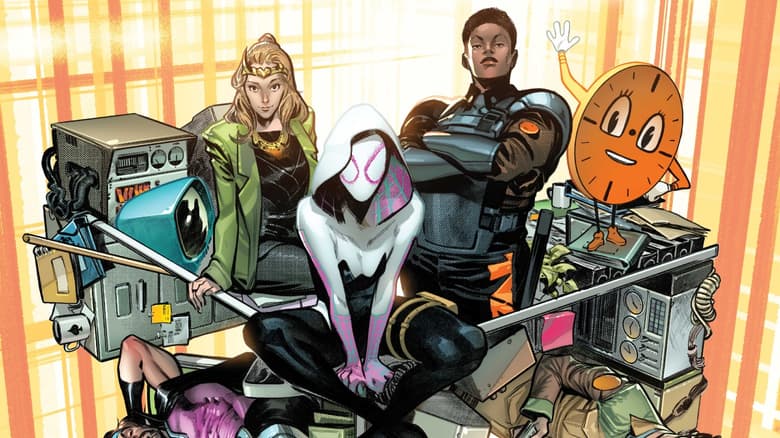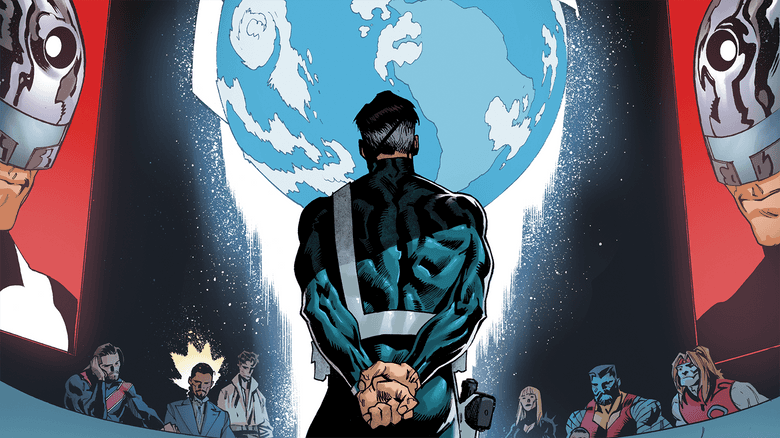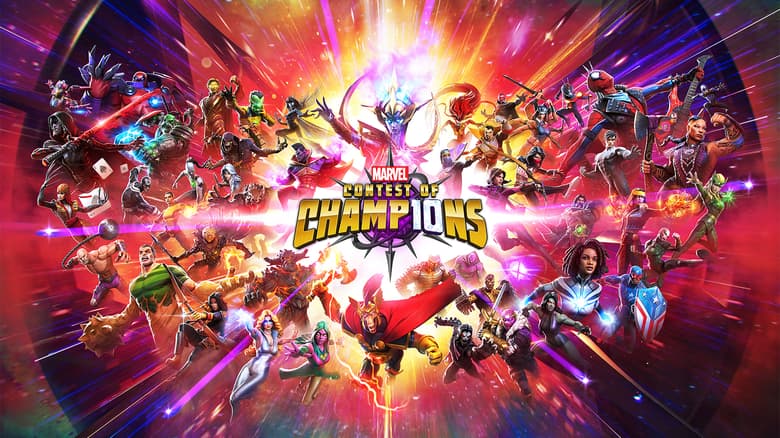'World of Wakanda' Artist Alitha Martinez Empowers the Dora Milaje
Speaking to Marvel.com, 'Black Panther: World of Wakanda' artist Alitha Martinez reflects on her history with Black Panther and her crucial changes to the Dora Milaje.

The following article is sponsored by StockX.
The legacy of Black Panther extends far beyond the mantle and the man himself. Indeed, since his introduction in Stan Lee and Jack Kirby's FANTASTIC FOUR (1961) #52, his world has grown exponentially, making Wakanda and all its wonders what it is today. That's exactly what Roxane Gay and Alitha E. Martinez's BLACK PANTHER: WORLD OF WAKANDA (2016) aimed to capture by shifting the narrative away from the royal family and onto the Dora Milaje, a group of elite women warriors who are also presented as potential brides for the king – at least traditionally. But the Dora Milaje have evolved since their introduction in BLACK PANTHER (1998) #1 by Christopher Priest and Joe Quesada, and Martinez has a lot to do with that.
Speaking to Marvel.com, Martinez reflected on her history with Black Panther, from her work on Priest and Quesada's 1998 series through her time as main artist on BLACK PANTHER: WORLD OF WAKANDA (2016). She explained why it was so important to her to update the Dora Milaje's uniforms in WORLD OF WAKANDA and shared her love of world building, which resulted in distinct, unique looks for each of the women in the series. She also weighed in on Ayo and Aneka's love story, T'Challa's staying power as a character, and more.
MARVEL.COM: What is your first memory of Black Panther? What was your first impression of the character and that world?
ALITHA MARTINEZ: Well, that one's very easy because it's when I was working with MARVEL KNIGHTS and Mark Texeira and we were actually drawing BLACK PANTHER (1998). That was the first time I ever heard of Black Panther. I never saw Black Panther before. And next thing you know, we're doing this character. It was like, "Okay! Let's go!"
So there he was, coming to New York, and he had these two women with him with really big hair and high heels and little – they looked like [escorts]! That's what I thought: "Oh my God. Is this where I am? There's nothing I can do about this? Let's go. Let's go." And that was my first encounter.
Coincidentally, that was one of the first books I got credit on, I got credited for doing, because up until then, I had been a ghost. So I'm working with a lot of people, bouncing between Marvel and DC, but never for credit. So this one, it was like, "Oh, I'm drawing [escorts]. Yup. That's what's happening." And then they explained to me that, "No, no, these are his potential brides!" "Still look like [escorts]. Okay."
MARVEL.COM: Since you got into the comics game, the landscape has really shifted quite a bit. How would you say WORLD OF WAKANDA stacks up against your other work?
ALITHA MARTINEZ: Well, you know, it's so weird because I'm sort of a unicorn. You know, you're the first one there in the door and so they're like, "Can she draw these things? I don't know! And we don't want her drawing the women because she's not going to make them sexy." Don't they know sexy women are my specialty?! My goodness… I like solo male heroes, so I don't care. I'll draw the men all day long. I can't wait for them to let me draw Namor so I can really enjoy myself! They should let me draw Namor, just finish that off. But that's a different conversation.
So here's this thing and then we come up on this one and suddenly they're like, "Okay, let's draw this," and then they give me all of the reference [from] Ta-Nehisi Coates and, I mean, what Doctor Stelfreeze has done is so beautiful. But I noticed one thing about them: somehow, he still managed to put that Conan bra, medal brassiere, and loincloth on this woman for no good reason! And I said, "I'm not drawing that. What we're going to do is calm this down some."
Because I think what I did bring to this comic book game are proper attire and functional clothing that women can fight in. You know, we can't do the heels because we all know in times of stress, those heels fly in two different directions and we are out the door. I don't see any woman go, "Let me grab those heels before I go!" I don't care how much they cost. Those shoes are gone.
So that is what I looked at. You know, this is what I can do here because we can make it look more like – when he said we need to get these women from all these different parts, it's not just about drawing a woman; it's about drawing a woman that people can recognize and women can go, "Finally!" Because, you know, as we watch comics and read them, we're holding our breath. We're going, "[holds breath]." I wanted to let that breath out and just enjoy them.
MARVEL.COM: Since their introduction in BLACK PANTHER (2009), Aneka and Ayo have become a really beloved part of the lore. What has it meant to you, as an artist, to tell such a foundational piece of their story?
You know, that's so weird! I guess you're supposed to say something touching… It's supposed to be really [exhales] but, you know, I'm such a workhorse that I put into that look and that build of it, so it's not until it's done to make sure – like now that I see the movie and I see how they chose to dress the characters. I fully covered them from neck down. I had no breasts exposed, none of that, because they're warriors and they need to look a certain way. They have to be taken seriously.
So you have to kind of put away that stuff and get around the gatekeepers and say, "They're not sexy anymore. Where's the metal brassiere?!" Somehow, that still was necessary, and I'm like, "We can't do that." What we can do is the wraps that people wear and things like that that people put on them, we can do the hairstyle, we can do the earrings, we can do the things that make – especially women of color – beautiful, because that is something that we're not really seen as. You can be smart, you can be strong, but you're not pretty. And I wanted to make that balancing act, but in a way that you don't notice it, that it's subtle.
So it's only after it's all done, because while you're working on it, you're just racing forward. I have no thoughts. I'm like, "I've got to get it done! Oh my God!" It was such a ride – such a race and a ride through it – that it's only after the fact that I can look at it. When I saw Black Panther and I could feel that DNA moving through it, I'm like, "This is absolutely beautiful. This is what I had intended."
MARVEL.COM: WORLD OF WAKANDA explores more than just Aneka and Ayo – we really get a glimpse of the Dora Milaje's inner workings, which means we get to see them in different settings and different outfits. Why was it so important to you to give each character their own, distinct look?
ALITHA MARTINEZ: That's part of the world building. I like to build worlds... You give me something that I can start and just do that, I will build that world for you so that other people can come and enjoy it. Because again, it's not about the stock character, because I could have just done, "We're just going to do a bunch of really pretty black ladies and they're all going to stand around looking cute." But it wasn't enough.
If you told me they come from the different tribes, that means I'm going to hit my research and I'm going to look at the different tribes and I'm going to extrapolate from them so I make sure that we are representing a lot of the African diaspora while we're seeing this. We have to. That is, again, something that I saw translated to the movie, especially the ones that put the clay in their hair so that it's red. I made sure to represent that group of people. So I was amazed. I'm like, "Oh my God! ...That's so wonderful! I love it!"
MARVEL.COM: What was your favorite part of exploring that corner of Wakanda?
ALITHA MARTINEZ: I'm always there for the fights. I'm not one with the love stories and stuff. I'm like, "This is torture! I can't! I don't want to think about love! I only know about people punching each other!" So I'm there for the fights and the building of that.
But it was interesting – in this one case – to get to build their small world. So to take what I saw Brian [Stelfreeze] do and then, "Okay, let's make this intimate. Let's really move around the space that they live in and understand that character interaction," especially when you're going so fast on the book. I mean, we were drawing – there was like no time. I had to cut down half of the things I would normally put in my style and condense it into something else. Because usually when I'm drawing things, everything looks different anyway, but this one looks way different, because it's like, "Just what we need and that's what we're going to do."
But getting to move through their village and then from their headquarters and then some time in New York and the things they're wearing, all these little touches that later on, when you see this series expanding and the world expanding, you see that people take that time to move through the village, let's make these things. So I think more than anything else, it just got away from the stockness of it, just basically going, "Nope, we're going to draw this." "Any old thing?" "No, let's draw things that look cultural. Let's see it."
MARVEL.COM: Of course, on the flip side, Aneka and Ayo get this beautiful love story across WORLD OF WAKANDA and beyond. How did you adapt your approach to capture the subtleties of their romance?
ALITHA MARTINEZ: Well, again, since everything was built so intimately, it happened right from the second page on when I'm introducing the two characters. Once I knew that that was what it was going to be about, it was like, "Okay, so we're not focusing on – I mean, I don't get to draw my Namor?! Fine!" But what they were focusing on, I could put this forward.
So I think, even from page two, when you're introducing like 14 different characters, but you can tell that those are two central characters and we start following them almost from the beginning. So whatever else is happening around them, we're watching them build. So it was established from page two.
MARVEL.COM: WORLD OF WAKANDA is a book helmed mainly by Black women. What was it like to be part of that team?
ALITHA MARTINEZ: Well, okay, there's two answers… One is the normal things. Number one, you're forgetting all my partner-in-crime Roberto Poggi, who is not a black male. He's a lovely Italian man. We worked so many long, long hours on this thing and got to know each other so, so well because we're doing that round-the-clock thing.
Unfortunately, I didn't have a lot of contact with Roxane [Gay] – you know how it is. I get a script out of the clear blue sky and they say, "Go! Make of it what you can." [laughs]... But this is one where I understood the intention of it. So that means I'm going to distill out a lot of things, so we can move the point of the story along, so we can stay focused on what the writer intended to stay focused on.
As far as people of color, it's very – I know it feels weird because we feel late, at the same time, coming to this game of diversity, when remember, I've been here since they let the animals off the ark and before they had any – you know, they weren't thinking about, "Are you a Black woman? What kind of woman are you?" Then they started to ask that question, and it's so weird.
I get a kind of double thing because people look at me and they assume what I am. But my name is Alitha Martinez, and that's my family name. So they realize, "You're Hispanic." So I'm one of them that fits all the bills! So when it's Hispanic Heritage Month? Haha! You got me!
But I found that there was a little bit of anger and backlash from that, because they're like, "She's not really Black, so you can't say that." And I'm like, "Well, you know what? When I walk down the street, I'm facing the same whatever you're facing too! Believe me, they don't go, 'Oh, no, let that one slide. I think that's Hispanic.'" No, they don't do that. That's not how it works. So when I'm looking at this, I realize – I think the society of illustrators is the one that told me I'm the first person of color woman to draw the flagship titles, the big ones for Marvel and DC. I'm like, "That is terrible!"
MARVEL.COM: What do you hope your contribution was to the legacy of Black Panther and Wakanda?
ALITHA MARTINEZ: What I hope they do and what I think they have taken away and what I've seen Marvel change the direction of: that they don't objectify and sexualize these women anymore. And as I said when I first drew them, those were [escorts]. I don't care what you said; those were [escorts]. They were in short, tight dresses, sometimes their underwear peeking through in the middle of a fight and it's nothing but, "Oooh, let me let the guys look at this."
Now you've gone a complete flip in the opposite direction. They're not hypersexualized. That doesn't mean they're not sexy – not at all – because they have really good clothes. They wear some designer stuff; I can't believe it! But we can see that their world, when they approach this material, they have to approach it from a serious vantage point, where these characters need to be grounded in their own culture, in their own world that reflects our world and our sensibilities.
I think that that breath that we all hold as women, when we see a comic book character coming to the screen, we go, "Please!" We know what we're looking for, and we get it maybe like 10%/20% of the time. We are hoping and praying that they'll [do] something about it. But you notice with this, we accept – it's almost like when you're watching Aliens, that you accept that Sigourney Weaver or some other strong woman is going to come along and make sense and they're going to ignore her, but no matter what, she's likely the one who is going to take out this trouble. It's the same with this. We have an expectation of strength and valor that I don't think that we can really have with a lot of other female characters.
MARVEL.COM: As I'm sure you're aware, T'Challa has really captured the public's hearts these days. In your opinion, what is it that makes him so, so special?
ALITHA MARTINEZ: You know, I must say that Chadwick [Boseman]'s portrayal of T'Challa, he breathed life into that character, totally and completely. It's almost like he breathed his last breath into that character. Just the way he just brought this forth to us that it just seemed so different and it was so new and so refreshing just to have this characters.
You know, he's been around a good long while, Black Panther here, and I say I'm late to the game. It wasn't until I actually got to draw him that I knew it even existed! But I think that's literally reflecting the way our society views characters, especially characters of color.
I remember seeing it with the Marvel crew first and the reaction was, "Oh! This was a good movie, and it's a great push for Avengers. Yay!" And then I took my brother to see it a week later when it came out, and I'm sitting in this theater and I'm starting to hear something weird, and there are grown men crying. I turned to my brother to go, "That guy over there, I think he's having a nervous breakdown." And when I'm looking at my brother, he's crying! Tears are slipping down his face.
I'm going, "Why am I seeing this reaction?" Because, again, as a comic book artist, at this point, I was already how many projects up the road? This was in my rearview mirror quite a distance away. But I realized that it was like a pause button that was hit, because finally, just like women want to see a good reflection of themselves in these wonderful franchises, men of color are waiting for it too. They need their Captain America. They need their character that feels that power, that doesn't come from a place where they have no agency. And it's like, "Okay, I can only be powerful as long as I am reflecting the white world that my ancestors were brought to. I have no reflection of my own."
It's almost a shame that Wakanda is not a real place, because people have embraced it as such, that this is something that's powerful and for me. So watching this beautiful man do this particular character at that time and stage in his life, it all just came together in this absolutely perfect storm of strength. So the loss we still feel – and I'm so happy that Marvel's chosen to honor him as such, but at the same time, I think what he would want is this character to live beyond him, that he breathed his life into this character so that this character can remain our Captain America.
MARVEL.COM: Is there anything else you'd like to add, that I didn't give you a chance to say in any of the previous questions?
ALITHA MARTINEZ: I'm one of those that I'm always being restarted, and it's only this year of going to conventions and stuff does it sort of starting to hit me as to why: because you don't know what to do with how we fit into the American narrative. If it's not neat and if it's not just this perfect fit, it's almost like, "What do we do with this person?" or "What do we do with this character?"
So I hope that it becomes something that when interest wanes, that they still think it's worth it... Unfortunately, the things that are not considered core happened to be the things of color. That is really difficult because it's not about us anymore and it's not about me anymore because I fought this war since I started comics. This is a landscape I entered, when they go, "You don't draw like a girl!" Till now, I never hear that... They can't say that anymore because it's like, "Really?!" And it's like, "No, I drew Iron Man and I destroyed that suit, so you can't say that 'girls can draw' -- that's what they do!" So to see that you waged this war so that others can create.
So, for myself, I hope one day I get to create! But it's all well with my soul if I don't, because I know for a fact by the way people approach and how things have changed in this industry and these beautiful creations being brought to the scene, that this is a good place. We built something here, so please don't forget.
Return to the world of Wakanda in WAKANDA (2022) #1, in print and digital comic shops now, and stay tuned for issue #2 on shelves November 16!
You can grab these comics and more digitally or at your favorite local comic book shop. Be sure to ask your local shop about their current business policies to observe social distancing or other services they may offer, including holding or creating pull lists, curbside pick-ups, special deliveries, and other options to accommodate. Find and support your local comic book shop at ComicShopLocator.com or by visiting Marvel.com/LoveComicShops.
For digital comics, all purchases in the Marvel Comics app can be read on iPhone®, iPad® and select Android™ devices! Our smart-paneling feature provides an intuitive reader experience, ideal for all types of mobile device and tablet users! Download the app on iOS and Android now!
